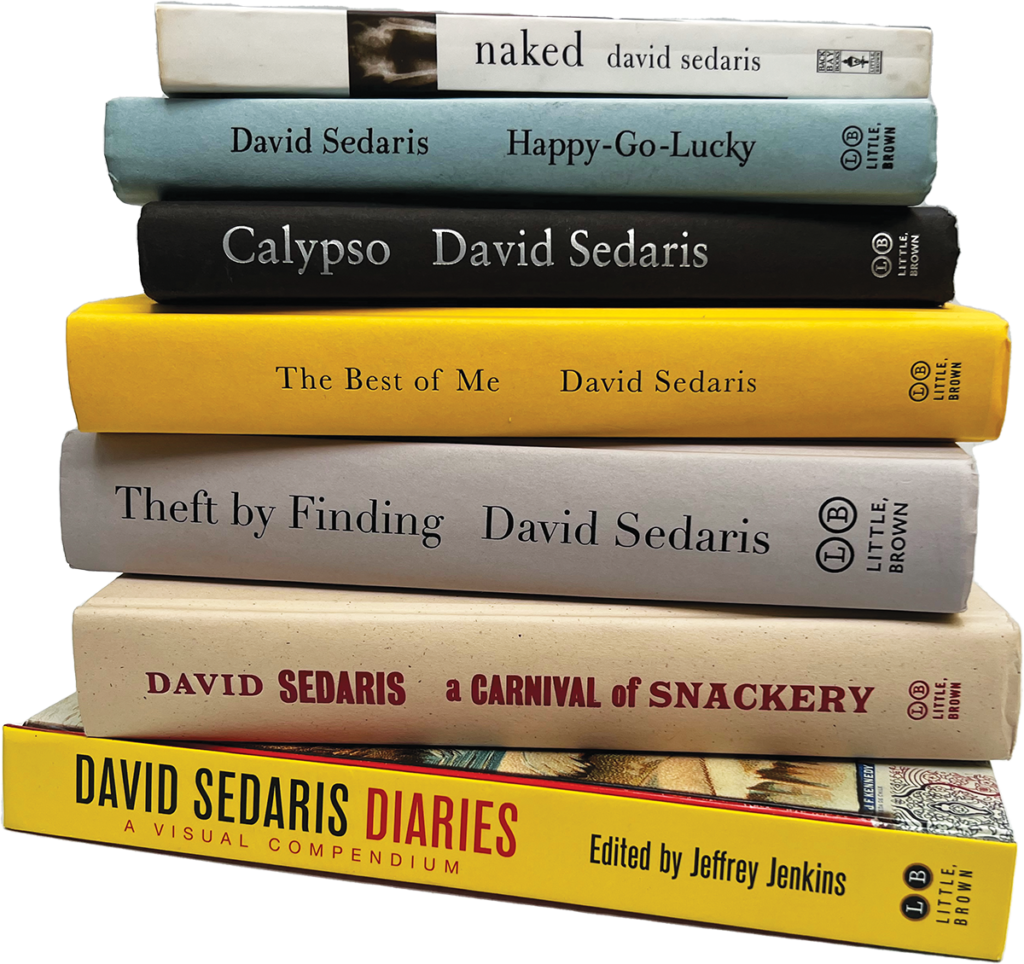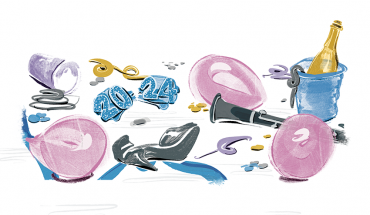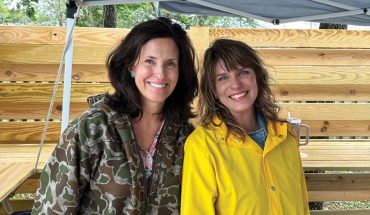A longtime fan’s love letter to the famous author, a Raleigh native, for sharing intimate stories of his family and life as a gay man.
by Larry Wheeler
It was summer of 1997 when I fell in love with David Sedaris. I was sitting at my desk at the North Carolina Museum of Art reading proofs of A Store of Joys, a book of essays written in response to pieces in our art collection.
I had just finished Sedaris’ essay, which described a fifth-grade field trip to the museum in which he encountered “The Resurrection of Christ,” a 17th-century painting by Giuseppe Maria Crespi. He wrote: “One look at this Italian altarpiece and you’ll know the museum practically went ‘baroque’ trying to pay for it.” And later on: “They coulda bought a Rembrandt, but instead they Botticelli.”
I got his number. The high-pitched voice that answered the phone seemed nervous when I introduced myself. Was I going to censor his piece, he likely wondered. Not a chance.
I congratulated him on the essay, and we chatted about what he was working on. He’d already gotten attention for Barrel Fever and was about to publish Naked. He was also working on a play with his very famous sister Amy, “Incident at Cobblers Knob,” for a summer series at New York City’s Lincoln Center. I promised to get up there to see it.
Along with my close friend Ann Stewart, I headed to New York for opening night. While waiting for the show to begin, I heard a familiar voice: it was Sedaris, with a group of friends. We introduced ourselves, wished him a “break a leg” and took our seats. It’s the only time I’ve ever met the man.
Nevertheless, for the last 25 years, I have enjoyed and been inspired by Sedaris’ irreverence, carefully crafted humor, colorful takes on the Raleigh of his youth and accounts of the evolving state of being gay.
Much of his storytelling involves the colorful Sedaris clan. The family grew up all around me when I was working and living in Raleigh in the 1970s and 80s. I didn’t know them, but knew well the places they animated: could that have been David sitting across from me at the IHOP on Hillsborough Street, or his brother Paul browsing at the Little Art Gallery at North Hills Mall?
And then there is the gay thing. Sedaris’ gayness is central to who he is, and he’s brought us along through his decades-long romp from sexual bemusement to confident, well-adjusted gay man. The journey — though I hate that term — is never well laid out for any of us. But Sedaris’ mix of humor and honesty keeps the adventure human and fun.
He’s described his relationship with Hugh Hamrick as it’s evolved over the years with deft sensitivity, which does not exclude its associated foibles. What to call him — partner, boyfriend, husband, lover? As Sedaris shared their conversations about these issues in an era of surprising progress for LGBTQ communities, we gay folks both related and celebrated.
Every bit of that honesty, wit and irreverence is in his latest book, Happy-Go-Lucky. He shares the complexities of later life, probing his testy relationship with his late father, his sister Tiffany’s suicide and the disruption of living through Covid times. Yet still, Sedaris finds the funny parts.
I maintain that David Sedaris is the Geoffrey Chaucer of our time and place. And I’m grateful for this chronicler of our best, worst and most peculiar behaviors.
This article originally appeared in the November 2022 issue of WALTER magazine.





